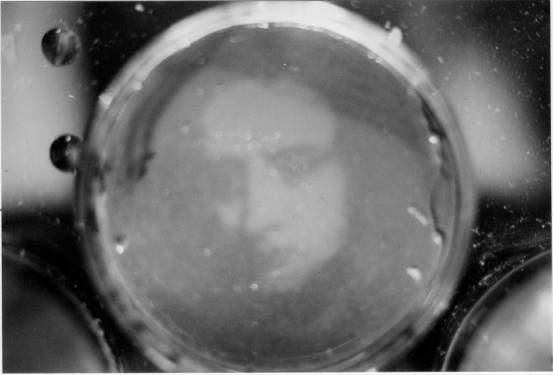The World's First Living Bacterial Photograph -
And Newton said, "Let there be light!"
The petri dishes were illuminated from underneath, and photographic masks placed under the dishes that allowed the light to pass through in the light areas of the photograph, thus flooding the bacteria with light in only those areas. After a period of 19 hours, an image is formed.
The image is a product of a combination of photosynthesis, phototaxis and scotophobia - a phenomenon where bacteria ae either attracted to the light, or scotophobia, where they move away from the dark. Amiss started working with the bacteria on the 10th May 1997, whilst a resident artist at the Schroder Art Foundation in Holland, and between then and 2001, he has grown some 61 images. An example of such an image is shown below:

The phenomenon of phototaxis has been deployed for pictorial ends, by Hader (1984) who produced an algograph, using cyanobacteria; a suspension of Phormidium was exposed to a projected photographic negative of a building, and the algae being phototactic, redistributed themselves according to the light intensities of the image, and thus generated a macroscopically visible photographic image. Furthermore, Hustede (1989) projected a black and white transparency onto a cuvette containing a suspension of purple bacteria, and the bacteria reproduced the picture in the cuvette after just 5 minutes exposure!
Roy Amiss, 5 December 2005
HOME
www.royamiss.co.uk